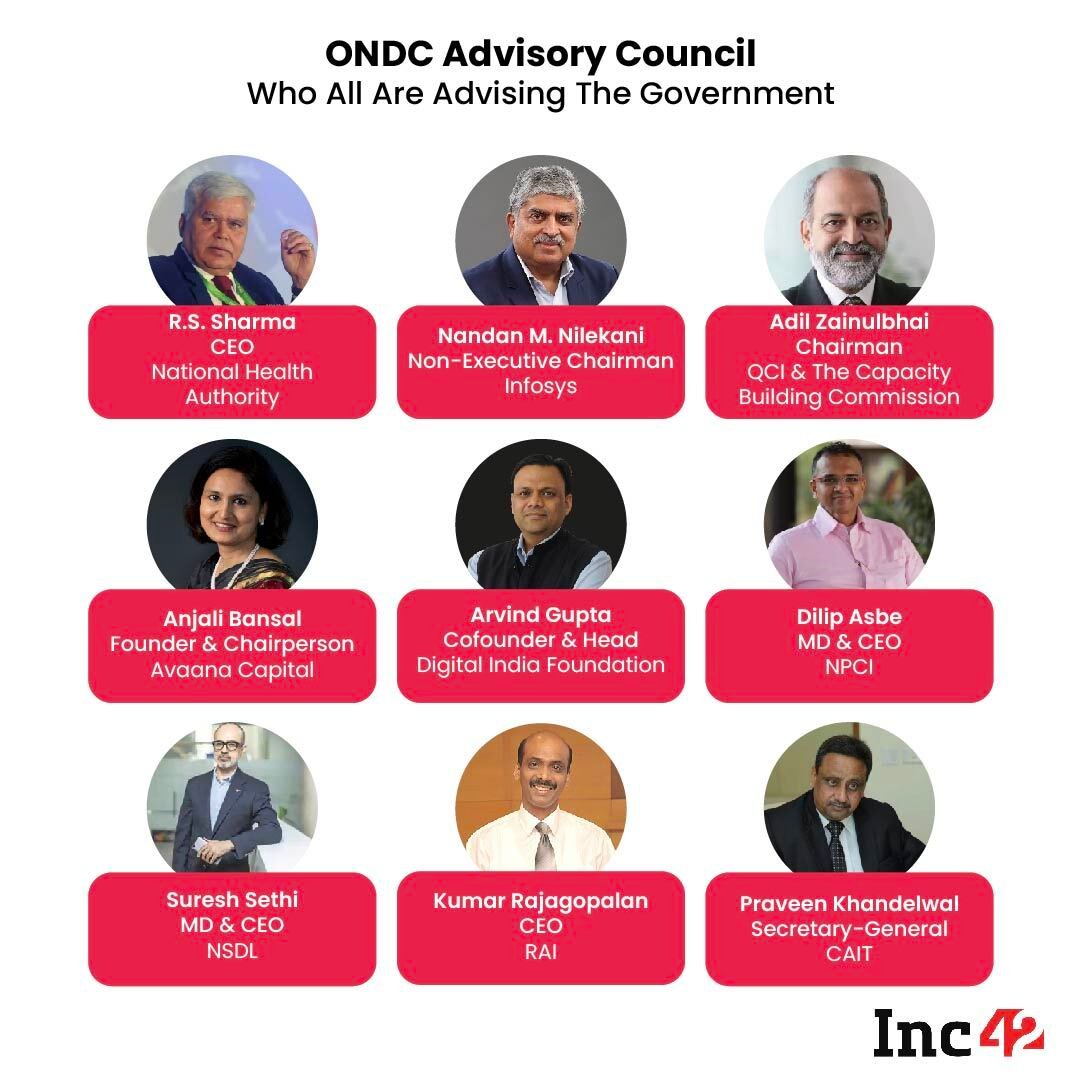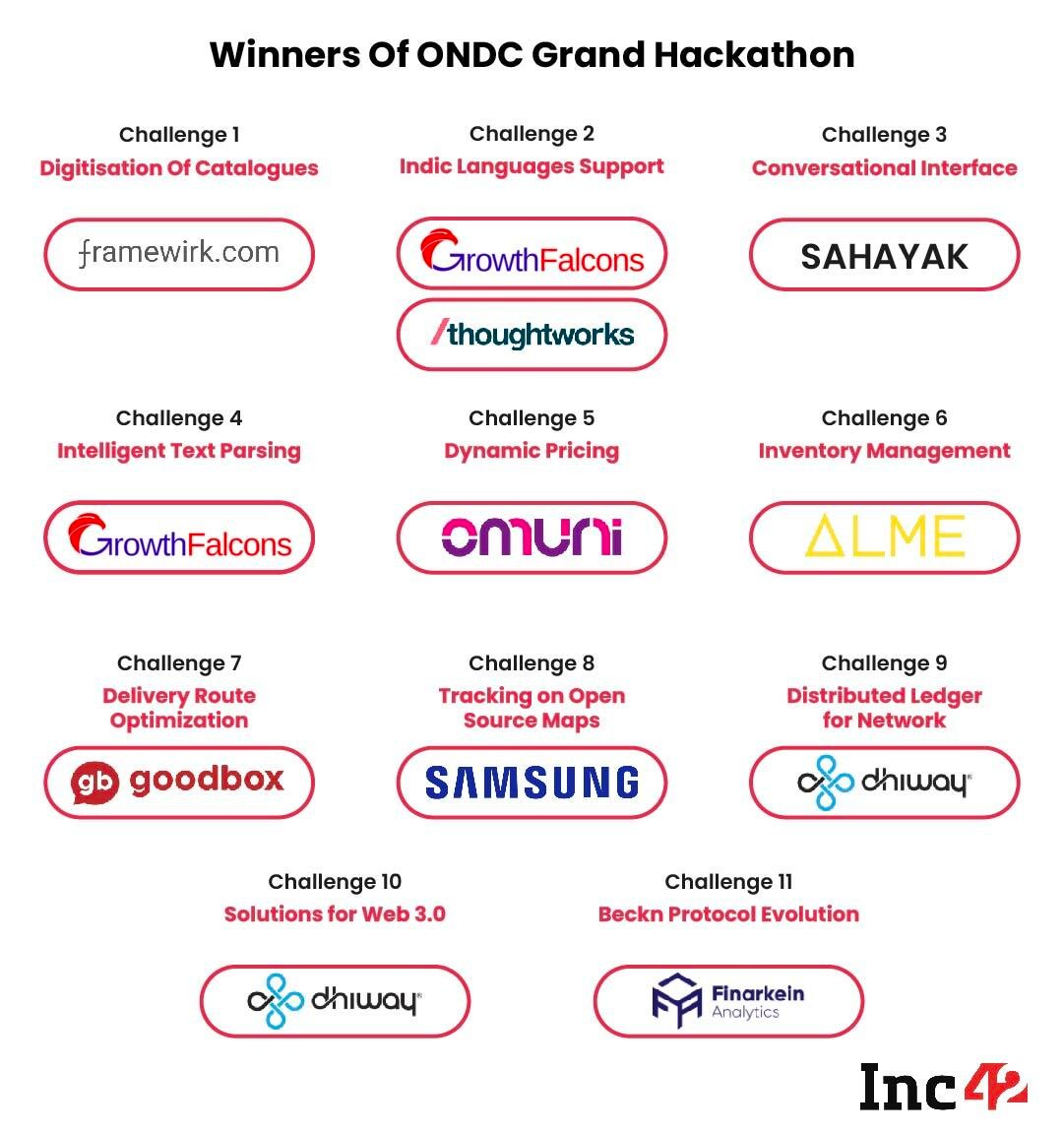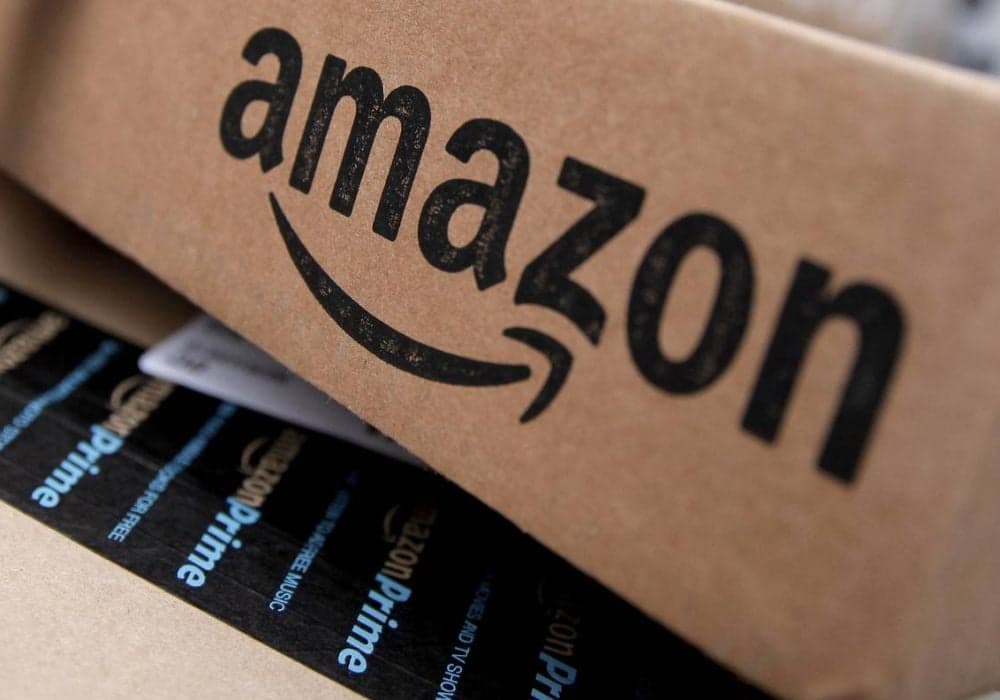ONDC is not about creating an alternative but expanding the current ecommerce market, says Nandan Nilekani, member of the ONDC advisory council
DPIIT recently organised a hackathon to help develop open-source protocols around digital commerce
ONDC is by the markets, for the markets, where all parts of the value chain will be able to participate, says Adil Zainulbhai, chairman of Quality Council of India
“Open Network for Digital Commerce (ONDC) is going to happen very quickly before people know what’s happening,” said Nandan Nilekani at the keynote address during the recently concluded Startup India Innovation Week.
The ONDC has been part of nationwide discussions since July 2021, when the Indian government announced the project. In simple terms, it is an open-source ecommerce platform that allows all buyers and sellers to transact regardless of the platforms where they are registered. Think of account holders in different banks transacting via the Unified Payments Interface (UPI), and you get the gist of the story. Just like the UPI, buyers and sellers need to be on ONDC-compliant platforms/apps for a seamless experience. The Quality Council of India (QCI) is currently developing open-source protocols to democratise the digital commerce ecosystem.
The benefits will be manifold. For starters, such a platform is bound to ensure dynamic pricing à la Ola-Uber, a demand-supply game, and optimum inventory management that will reduce waste (as and when applicable) and delivery costs. The ease of doing business will increase. The cost of doing business will come down. More importantly, it may end the hegemony of ecommerce MNCs Amazon and Walmart-owned Flipkart. Together they hold over 60% of the stake in the Indian ecommerce space.
The ecommerce market in India has grown at a fast clip over the years, doubling between 2017 and 2020. According to a report by Inc42 Plus, it would cross $200 Bn by 2026, growing at a CAGR of 19%. However, it may soon become one of the top-grossing sectors now that a new ecommerce framework is in the works, one that makes small retailers and neighbourhood kirana stores easily discoverable and businessworthy.
Besides, the ONDC initiative can usher in a disruptive change and curb the unwarranted control enjoyed by Amazon and Flipkart for a long time.
A press statement by DPIIT (the Department for Promotion of Industry and Internal Trade) says ONDC is a globally first-of-its-kind initiative that aims to democratise digital commerce, moving it from a platform-centric model to an open network. In fact, what the UPI is to the digital payment domain, the ONDC is to ecommerce in India. No matter what platform/application they use, this project will empower merchants and consumers by breaking silos to form a single network to drive innovation and scale, transforming all businesses from retail to food to mobility.
Anil Agrawal, additional secretary of DPIIT, explained the concept during the inauguration of the Startup Innovation Week. “When you exchange email, you don’t have to be on the same platform. Similarly, when you exchange information over the internet, you don’t have to use the same browser. However, when you do ecommerce, you need to be on a particular platform to buy and sell. We are trying to change this. We are building interoperability among various applications for buying and selling of goods and services across the country.”
It is worth noting that the UPI system, developed by National Payments Corporation of India, has captured around 60% of the payments market in India since its launch in 2016. UPI transactions have skyrocketed to 4.5 Bn in December 2021, from 100K in November 2016. More importantly, these payments are much cheaper than the traditional digital payments by plastic cards and other methods.
The Beginning Of ‘Open’ Commerce
“The next “UPI moment” will be the ONDC. The first-of-its-kind globally, ONDC to enable interoperability between ecommerce companies, providing equal opportunity to small & large players, will help control digital monopolies & make industry more inclusive for buyers & sellers alike, empowering MSMEs to unlock innovation & value,” Piyush Goyal, minister of commerce and industry
Speaking of how it started, Agrawal said that the idea of ONDC was conceived in April 2020, soon after the first wave of COVID-19, when the entire country found it difficult to ensure essential supplies across containment zones.
India laid the groundwork in July 2021 as the government set up an advisory council to help frame the network and accelerate the adoption of ONDC.

On August 13, 2021, Piyush Goyal, the minister of commerce and industry, chaired a meeting with experts and the members of the advisory council.
In subsequent advisory council meetings, it was decided that the ONDC:
- Shall take all measures to ensure confidentiality and privacy of data across the network
- Shall not mandate sharing of any transaction-level data by ONDC participants
- Will work with its participants to publish network performance without compromising on confidentiality and privacy
- Will be compliant with the Information Technology Act, 2000, and designed for compliance with the emerging Personal Data Protection Bill
Why The ONDC Is Set To Disrupt Ecommerce
“ONDC is an idea whose time has come,” said Nandan Nilekani.
Talking about the plans to develop and implement the protocols and manage digital commerce, Nilekani said ONDC would meet the following criteria to ensure India’s next big disruption and revolution. This is crucial as any project aiming to disrupt the market should meet at least four or five criteria, as the UPI and Aadhaar did in the past. These include:
- The government’s commitment to the project
- Social and marketing needs for the project to succeed
- An institution to execute it
- Access to best-in-class technology
- Availability of dynamic innovators
As the government is orchestrating the entire project, its commitment is evident. So, let us consider the other four parameters and whether ONDC fits the bill.
Is There A Market For ONDC?
Ecommerce will be a way of life for Indians (especially after the pandemic), believes Nilekani. In fact, there will be a massive migration, with more and more people ordering online through different devices. Past data also validates this. According to global consultancy firm Bain & Company, at 140 Mn, India had the third-largest online shopper base in 2020, right after China and the US.
“There will be millions of people ordering online. India has a trillion-dollar retail economy. Even if 20% of that goes online, we are talking about $200 Bn doing online commerce. So, there’s a huge market need for this,” he said.
However, ecommerce is not about winner-takes-it-all. It is not like social media or search, where one or two players see all the action. In ecommerce, there will be multiple players. So, we have to create a way for the small entrepreneur, the small merchant and the small seller to compete equitably in this new ecommerce world, he added.
The Institutional Role Of The ONDC
Commenting on its institutional role, Nilekani said the ONDC is an NPCI-like Section 8 institution with many public-spirited shareholders.
It will manage all interactions across this open network and put in place the ground rules, network participation rules, obligations and counterparty rules, besides defining how to deal with complaints and resolve disputes.
Based on the advisory council’s framework, the protocols will allow a wide set of network participants to interoperate and contribute so that different sellers can reach out to different buyers and vice versa. Discovery will be done through interoperability, defined by best-in-class protocols.
Earlier, DPIIT said that apart from setting up the ONDC to manage the open network, the government might consider establishing an independent regulatory authority for ecommerce (such as SEBI that regulates capital markets).
Initially, the ONDC will focus on onboarding small and medium players. But it will gradually evolve into a self-sustaining entity, generating income for its operations and surpluses for continuous investment in technology, processes and network development.
How The ONDC Will Meet The Tech Gap
Now that the basic guidelines are in place, the ONDC recently organised a hackathon where 64 teams took part to create innovative solutions to meet 11 key challenges. These included digitisation of catalogues, Indic language support, conversational interface, intelligent text parsing, dynamic pricing, inventory management and more.

According to Adil Zainulbhai, chairman of the QCI, open technology has energised the startup ecosystem to come up with many solutions in various sectors. This is a breakthrough approach.
What Ayushman Bharat is doing for healthcare and the National Skill Development Corporation is doing for skilling, the ONDC is doing for digital commerce. It is by the markets, for the markets, where all parts of the value chain will be able to participate, he added.
Why India Needs A Different Ecommerce Model
As ecommerce in its various formats has emerged as the next big thing of Indian retail, the Bharat consumers (shoppers beyond Tier 1 cities) are getting comfortable shopping on Amazon and Flipkart. But it is no longer a veritable duopoly, thanks to the super-app ambitions of desi but deep-pocketed aspirants like Reliance Industries, the Tata group, Paytm and others.
A similar spread is also seen globally, be it in China or the US, where a handful of players like the Alibaba Group, JD.com, Amazon and Walmart rule the digital market. In fact, very few economies are promoting digital market inclusivity via an ‘open source’ model or focussing on onboarding medium and micro-businesses.
Nilekani, in his submission, stressed the need for a new format for several reasons. He argued that India’s internet economy is different from what it is in the US. For instance, the Western model is advertising-led internet, while the Indian model is transaction-based.
For the last 20 years, the rise of the internet in the West has been fuelled by digital advertising. That is how big players like Google and Facebook make money.
“But in India, the digital advertising market is very small. It is around $2-3 Bn of the total $10 Bn advertising revenue. Therefore, India will be a transaction-led economy for the internet. And technologies like the UPI, which is very high volume, zero-cost and very simple to use will drive that. We have to take advantage of the fact that India will be a transaction-led internet economy. And that is also part of the trend that the ONDC will play on,” added Nilekani.
Besides, most department stores are extending home delivery services nowadays. And the neighbourhood kirana stores also fall under that category. This way, groceries and other goods will be delivered fast, without a hitch.
India needs a digital infrastructure that can include all these existing formats instead of forcing small businesses to register on third-party marketplaces that require 20% or more in commissions and other fees for the ease of doing business. The better option is to adopt a cost-effective ‘open’ solution that will help drive digital growth.
Update: Praveen Khandelwal, secretary-general of CAIT recently resigned from ONDC Advisory Council citing ethical grounds. “Being a stakeholder, it would not be ethical and proper for me to continue as a Member of the ONDC Advisory Council unlike Nandan Nilekani of Infosys which is supporting Amazon and Adil Zainulbhai who is on the board of Reliance,” said Khandelwal.

































 Ad-lite browsing experience
Ad-lite browsing experience